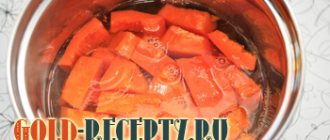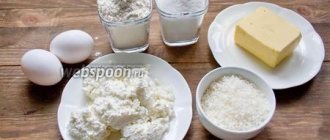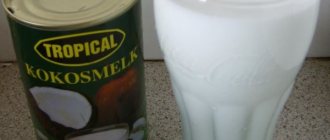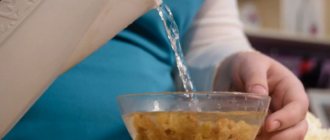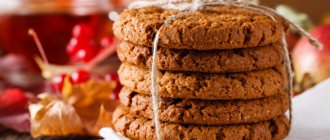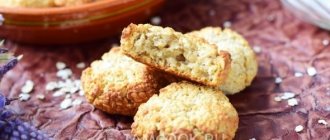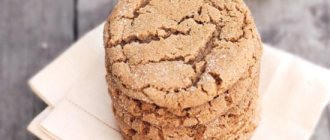“Kokosanka” cookies are distinguished by the absence of flour in their composition. True, in some of the recipes it is still provided, but in small quantities. As the name suggests, the main component of the delicacy is coconut (or rather, shavings). In addition to the availability of ingredients, the good thing about cookies is that they take very little time to prepare. And if you show a little imagination, it will turn out both tasty and beautiful.
Cookies "Coconuts". Recipe with photo
As mentioned above, baked goods are prepared both with and without wheat flour. Some housewives replace it with starch, while others manage to do without it. The required ingredients are chicken eggs, sugar and coconut flakes. In addition, you can use nuts (walnuts, almonds, hazelnuts), chocolate or cocoa. In any case, you will get tender, crumbly and incredibly aromatic Kokosanka cookies. The calorie content of this dessert, despite the absence of any fat in the composition, will be quite high. After all, the main ingredient - coconut flakes - contains more than 400 kcal per 100 grams.
Recipe Coconut cookies without sugar with honey. Calorie, chemical composition and nutritional value.
Nutritional value and chemical composition of “Kokosanka cookies without sugar with honey.”
The table shows the nutritional content (calories, proteins, fats, carbohydrates, vitamins and minerals) per 100 grams of edible portion.
| Nutrient | Quantity | Norm** | % of the norm in 100 g | % of the norm in 100 kcal | 100% normal |
| Calorie content | 405.4 kcal | 1684 kcal | 24.1% | 5.9% | 415 g |
| Squirrels | 11.8 g | 76 g | 15.5% | 3.8% | 644 g |
| Fats | 39.5 g | 56 g | 70.5% | 17.4% | 142 g |
| Carbohydrates | 14.3 g | 219 g | 6.5% | 1.6% | 1531 g |
| Water | 34 g | 2273 g | 1.5% | 0.4% | 6685 g |
| Ash | 0.378 g | ~ | |||
| Vitamins | |||||
| Vitamin A, RE | 98.4 mcg | 900 mcg | 10.9% | 2.7% | 915 g |
| Retinol | 0.095 mg | ~ | |||
| beta carotene | 0.023 mg | 5 mg | 0.5% | 0.1% | 21739 g |
| Vitamin B1, thiamine | 0.026 mg | 1.5 mg | 1.7% | 0.4% | 5769 g |
| Vitamin B2, riboflavin | 0.166 mg | 1.8 mg | 9.2% | 2.3% | 1084 g |
| Vitamin B4, choline | 94.97 mg | 500 mg | 19% | 4.7% | 526 g |
| Vitamin B5, pantothenic | 0.492 mg | 5 mg | 9.8% | 2.4% | 1016 g |
| Vitamin B6, pyridoxine | 0.053 mg | 2 mg | 2.7% | 0.7% | 3774 g |
| Vitamin B9, folates | 2.649 mcg | 400 mcg | 0.7% | 0.2% | 15100 g |
| Vitamin B12, cobalamin | 0.197 mcg | 3 mcg | 6.6% | 1.6% | 1523 g |
| Vitamin D, calciferol | 0.832 mcg | 10 mcg | 8.3% | 2% | 1202 g |
| Vitamin E, alpha tocopherol, TE | 0.227 mg | 15 mg | 1.5% | 0.4% | 6608 g |
| Vitamin H, biotin | 7.643 mcg | 50 mcg | 15.3% | 3.8% | 654 g |
| Vitamin K, phylloquinone | 0.1 mcg | 120 mcg | 0.1% | 120000 g | |
| Vitamin RR, NE | 1.3622 mg | 20 mg | 6.8% | 1.7% | 1468 g |
| Niacin | 0.072 mg | ~ | |||
| Macronutrients | |||||
| Potassium, K | 52.97 mg | 2500 mg | 2.1% | 0.5% | 4720 g |
| Calcium, Ca | 20.81 mg | 1000 mg | 2.1% | 0.5% | 4805 g |
| Magnesium, Mg | 4.54 mg | 400 mg | 1.1% | 0.3% | 8811 g |
| Sodium, Na | 50.7 mg | 1300 mg | 3.9% | 1% | 2564 g |
| Sera, S | 66.59 mg | 1000 mg | 6.7% | 1.7% | 1502 g |
| Phosphorus, Ph | 72.6 mg | 800 mg | 9.1% | 2.2% | 1102 g |
| Chlorine, Cl | 59.03 mg | 2300 mg | 2.6% | 0.6% | 3896 g |
| Microelements | |||||
| Iron, Fe | 0.946 mg | 18 mg | 5.3% | 1.3% | 1903 |
| Yod, I | 7.57 mcg | 150 mcg | 5% | 1.2% | 1982 |
| Cobalt, Co | 3.784 mcg | 10 mcg | 37.8% | 9.3% | 264 g |
| Manganese, Mn | 0.011 mg | 2 mg | 0.6% | 0.1% | 18182 g |
| Copper, Cu | 31.41 mcg | 1000 mcg | 3.1% | 0.8% | 3184 g |
| Molybdenum, Mo | 2.27 mcg | 70 mcg | 3.2% | 0.8% | 3084 g |
| Selenium, Se | 11.616 mcg | 55 mcg | 21.1% | 5.2% | 473 g |
| Fluorine, F | 20.81 mcg | 4000 mcg | 0.5% | 0.1% | 19222 g |
| Chromium, Cr | 1.51 mcg | 50 mcg | 3% | 0.7% | 3311 g |
| Zinc, Zn | 0.42 mg | 12 mg | 3.5% | 0.9% | 2857 g |
| Digestible carbohydrates | |||||
| Mono- and disaccharides (sugars) | 0.3 g | max 100 g | |||
| Essential amino acids | |||||
| Arginine* | 0.299 g | ~ | |||
| Valin | 0.291 g | ~ | |||
| Histidine* | 0.129 g | ~ | |||
| Isoleucine | 0.227 g | ~ | |||
| Leucine | 0.409 g | ~ | |||
| Lysine | 0.341 g | ~ | |||
| Methionine | 0.159 g | ~ | |||
| Methionine + Cysteine | 0.272 g | ~ | |||
| Threonine | 0.231 g | ~ | |||
| Tryptophan | 0.076 g | ~ | |||
| Phenylalanine | 0.246 g | ~ | |||
| Phenylalanine+Tyrosine | 0.428 g | ~ | |||
| Nonessential amino acids | |||||
| Alanin | 0.269 g | ~ | |||
| Aspartic acid | 0.465 g | ~ | |||
| Glycine | 0.159 g | ~ | |||
| Glutamic acid | 0.67 g | ~ | |||
| Proline | 0.151 g | ~ | |||
| Serin | 0.352 g | ~ | |||
| Tyrosine | 0.182 g | ~ | |||
| Cysteine | 0.11 g | ~ | |||
| Sterols (sterols) | |||||
| Cholesterol | 215.68 mg | max 300 mg | |||
| Saturated fatty acids | |||||
| Saturated fatty acids | 1.1 g | max 18.7 g | |||
| 14:0 Miristinovaya | 0.015 g | ~ | |||
| 15:0 Pentadecane | 0.004 g | ~ | |||
| 16:0 Palmitinaya | 0.776 g | ~ | |||
| 17:0 Margarine | 0.011 g | ~ | |||
| 18:0 Stearic | 0.333 g | ~ | |||
| 20:0 Arakhinovaya | 0.011 g | ~ | |||
| Monounsaturated fatty acids | 1.881 g | min 16.8 g | 11.2% | 2.8% | |
| 16:1 Palmitoleic | 0.148 g | ~ | |||
| 17:1 Heptadecene | 0.004 g | ~ | |||
| 18:1 Oleic (omega-9) | 1.548 g | ~ | |||
| 20:1 Gadoleic (omega-9) | 0.015 g | ~ | |||
| Polyunsaturated fatty acids | 0.477 g | from 11.2 to 20.6 g | 4.3% | 1.1% | |
| 18:2 Linolevaya | 0.416 g | ~ | |||
| 18:3 Linolenic | 0.023 g | ~ | |||
| 20:4 Arachidonic | 0.038 g | ~ | |||
| Omega-6 fatty acids | 0.7 g | from 4.7 to 16.8 g | 14.9% | 3.7% |
The energy value of Kokosanka cookies without sugar with honey is 405.4 kcal.
Primary Source: Created in the application by the user. Read more.
** This table shows the average levels of vitamins and minerals for an adult. If you want to know the norms taking into account your gender, age and other factors, then use the “My Healthy Diet” application.
Basic recipe (no flour)
For a glass of coconut flakes you will need 150 g of granulated sugar and 3 chicken eggs. Before you start making cookies, you need to turn on the oven so that it warms up to 190 degrees. Then beat the eggs with sugar. You don’t have to be particularly zealous; you don’t even have to use a mixer, but do it with a regular whisk or fork.
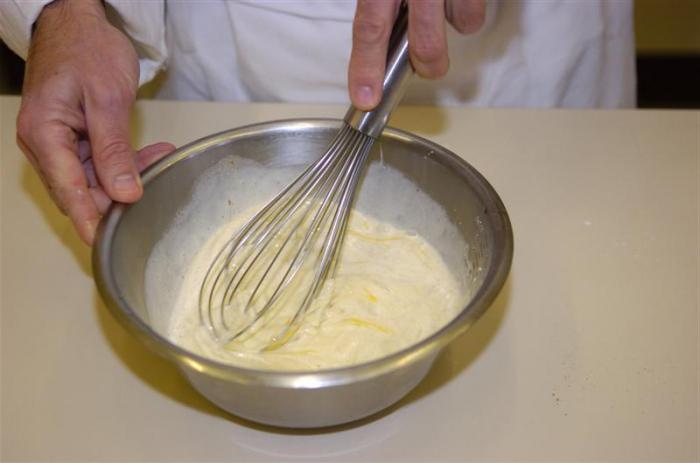
Then coconut shavings are gradually poured into the mixture, kneading a soft dough. Small balls or cones are formed from it and placed on a baking sheet (pre-lay baking paper on it). The products are placed in the oven for about 20 minutes, making sure that the tops do not burn. And now the fragrant Kokosanka cookies are on your table! The recipe can be slightly varied at your discretion. It would also be nice to decorate the dessert, for example, using colored shavings.
Diet recipe for coconut cookies without flour
This recipe for healthy cookies made from coconut flour will be a godsend for those who want to eat delicious things without gaining weight. The treat does not contain nuts, eggs or gluten, so it is suitable for people with allergies to these products. To prepare you will need:
- 1.5 cups dry coconut flakes;
- 1 tbsp. spoon of coconut flour;
- 2 tbsp. spoons of coconut oil;
- 3 tbsp. spoons of honey;
- a pinch of salt;
- 2 g vanillin.
Mix all ingredients in a blender. Roll small balls from the resulting dough, place on a baking sheet and bake at 180°C for 10 minutes. After this, turn the balls over and place in a preheated but turned off oven for another 5-10 minutes to allow the cookies to dry.
Let the cookies cool and you are ready to serve!
Cookies "Kokosanka" - recipe with flour
This option is for those who believe that eggs and nuts alone will not hold the shape. Flour in the amount of 2 tablespoons is added at the very end, rather for self-soothing. As practice shows, after 2-3 successful experiments, housewives still refuse it. So, beat the same 3 eggs with 100 grams of sugar, add a glass of coconut flakes and 2 tablespoons of flour to the mixture.
The dough mixed in this way is formed into balls, baking them in a not very hot oven until ready. Since the “Kokosanka” cookies, the recipe for which contains flour, are less tender and crumbly, they can be decorated with nuts or chocolate glaze if desired.
Use of coconut flour in medicine
Coconut flour itself is not considered a medicinal product. However, dishes containing coconut flour are useful for diseases of the gastrointestinal tract, in particular for dyskinesias of the gallbladder and ducts. Flour, or rather, the components included in its composition, increase the tone of the walls of the bile ducts and thereby have a choleretic effect. Fatty acids help dilute bile, so they are good for cholelithiasis.
It is recommended to replace plain white (wheat) flour with coconut flour for those who suffer from diseases of the circulatory system (arterial hypertension, atherosclerosis, arrhythmias, cerebrovascular accidents). Coconut flour contains complete proteins, fatty acids and vitamins, which improve sexual function in men. Regular consumption of products with coconut flour is recommended for women to improve hormonal levels. Also, the components included in coconut flour help relieve inflammation of the genital organs, help lengthen the reproductive period of women and delay menopause. Coconut flour is often added to sports nutrition products. This is due to the fact that the product contains a lot of protein and vitamins. These components help increase lean muscle tissue and increase endurance during sports training. Nutritionists believe that dishes made from coconut flour are useful for people who want to remove extra centimeters from the waist. Flour contains a lot of fiber, which normalizes stool, reduces the absorption of nutrients from the intestines, and also helps restore intestinal microflora. Very often, coconut flour is included in dishes intended for a fermented milk diet.
How to reduce calories
Even in the basic version (without flour and starch), the baked goods are quite nutritious. 100 grams of product contains 462 kcal. Moreover, the main share of them comes from coconut flakes (without which, by definition, nothing will work). Therefore, in this case, there is simply no talk of a global reduction in caloric intake. Those who are on a diet are not recommended to eat cookies (or they should limit the serving to 1-2 pieces).
True, if you use only whites instead of whole eggs, this will lead to a reduction in calorie content to 375 kcal per 100 g. Undoubtedly, it is very difficult to call this option dietary, but at least there is some progress. You will need 1 more protein than whole eggs (or take 25% less of the remaining ingredients). And you need to beat them more thoroughly, to stable peaks (like meringue). It also turns out quite tasty and tender. You can bake with or without flour.
Recipe for coconut egg white cookies
Cookies prepared according to this recipe are airy, crispy and very tasty. To prepare it you only need 3 ingredients:
- 100 g coconut flour;
- 4 chicken proteins or 15 g of dry albumin;
- Sweetener to taste.
Beat the chicken whites into a strong foam, then add coconut flour, sweetener and mix gently. Using a pastry bag, pipe the cookies onto a non-stick mat or parchment paper. Bake for 8-10 minutes in an oven preheated to 180°C.
Crispy coconut cookies are ready.
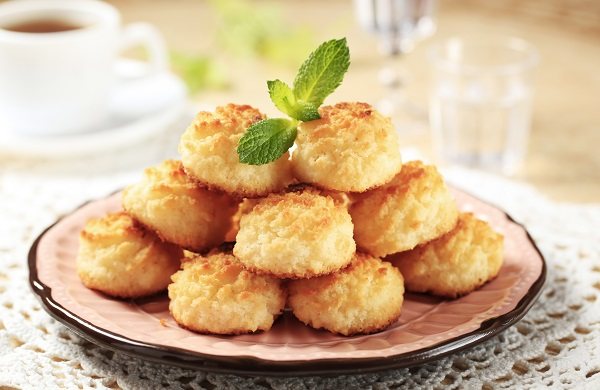
Decoration
If “Kokosanka” cookies (any recipe) are prepared for daily tea drinking, then the baked goods can be served to the table literally hot, but you can also cool them slightly. In the case where this dessert is planned to be used in a formal setting, it is advisable to give it an appropriate appearance. There are several ways to do this. Firstly, multi-colored coconut shavings (placed in the dough instead of white) will come to the aid of housewives. Then, using any cream or even condensed milk, products of suitable shades are combined in pairs (pink half with green, yellow with blue, white with chocolate, etc.).
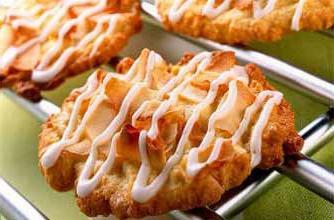
Another option is to decorate the tops of the cookies with whole nuts (almonds, hazelnuts, cashews). True, this method allows you to largely influence the taste of the product, and not its appearance. But it turns out quite well.
An excellent way to decorate Kokosanka cookies (it’s better to use flour or starch in the recipe so that they don’t fall apart) is to use melted chocolate. They take it little by little of different types (dark, milky and white) - 50 grams of each. The chocolate is broken and melted in the microwave or in a water bath, and then carefully poured over the cookies (icing sugar or culinary colored markers based on it will also work). With a little imagination and using a pastry syringe, you can draw flowers, ornaments or stripes of chocolate on the surface of the “coconuts”.
Due to the ease of preparation and availability of ingredients, such cookies can be a lifesaver in case of unexpected guests. After all, eggs and sugar are in every home. The only problem can be the coconut flakes. Be prudent, buy a couple of bags, they will come in handy around the house. And no one will guess that this culinary masterpiece was prepared spontaneously, in a hurry. Guests are more likely to think about their own luck. After all, it’s not often that an unexpected visit coincides with the preparation of such aromatic, tender and tasty cookies.
Application in cosmetology
If you decide to replace regular white flour with coconut flour, you will notice a pleasant metamorphosis with your skin. The composition of coconut flour is rich in vitamins that help fight imperfections in the skin, hair, and nails. The benefits of coconut flour are that it nourishes the skin and helps keep it hydrated. Also, when using this product, smoothing and toning of the skin is noticed.
Coconut flour helps strengthen hair follicles and restore skin integrity. Coconut flour effectively helps with burns, abrasions and wounds.
